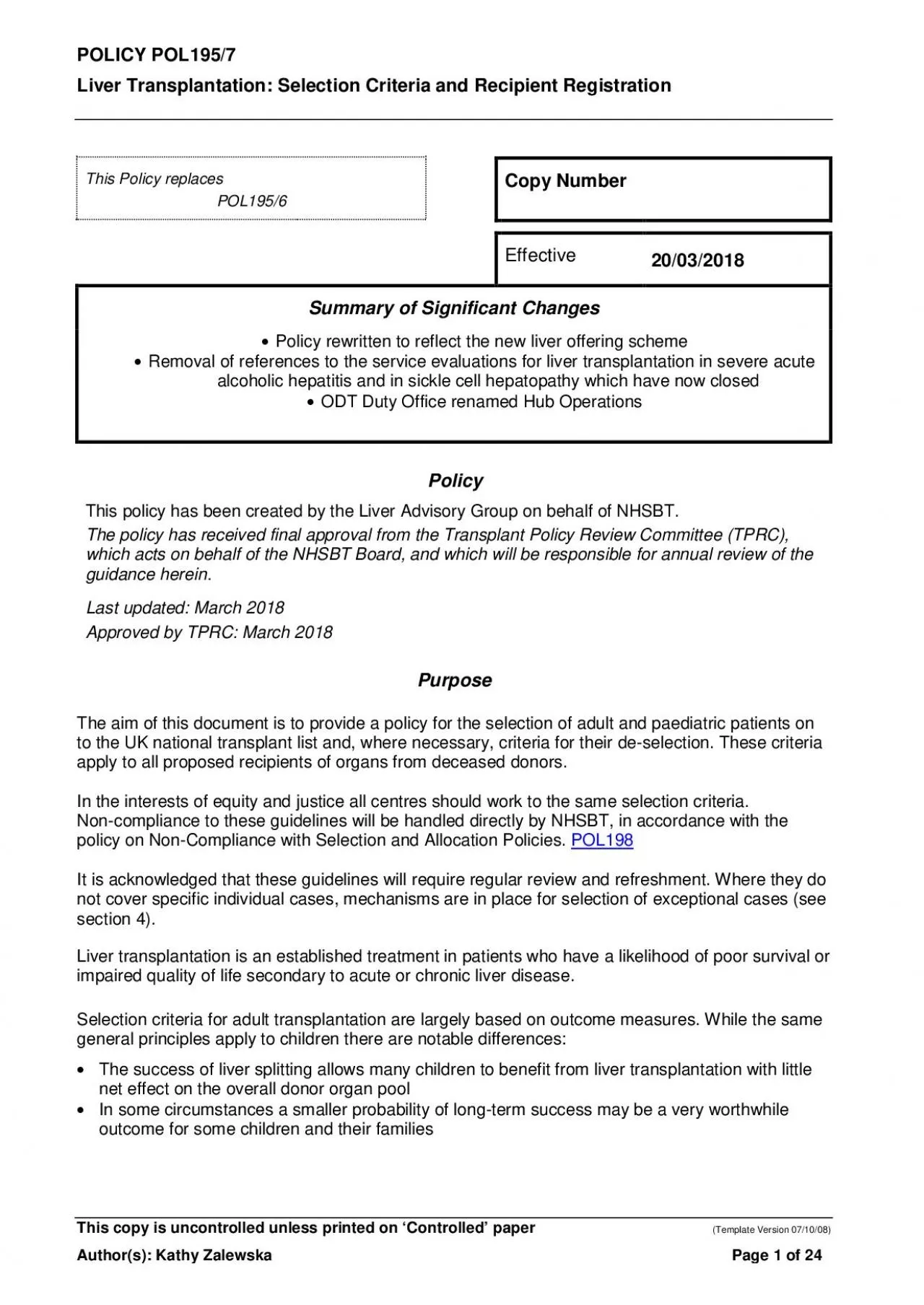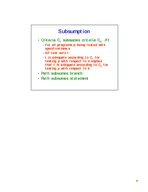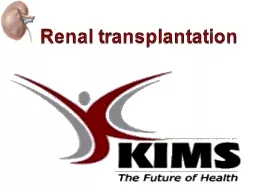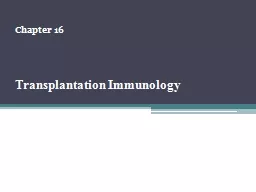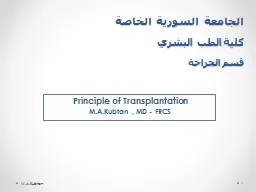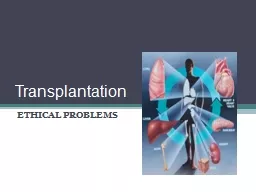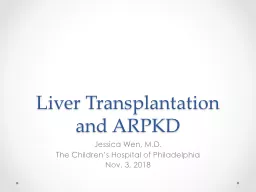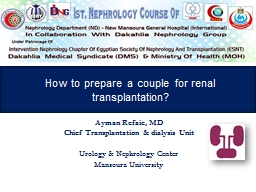PDF-POLICY POL1957Liver Transplantation Selection Criteria and Recipient
Author : winnie | Published Date : 2022-10-14
This copy is uncontrolled unless printed on 145Controlled146 paperTemplate Version 071008 Authors Kathy Zalewska Page 1 of 24 This Policy replacesPOL195Copy Number Summary
Presentation Embed Code
Download Presentation
Download Presentation The PPT/PDF document "POLICY POL1957Liver Transplantation Sele..." is the property of its rightful owner. Permission is granted to download and print the materials on this website for personal, non-commercial use only, and to display it on your personal computer provided you do not modify the materials and that you retain all copyright notices contained in the materials. By downloading content from our website, you accept the terms of this agreement.
POLICY POL1957Liver Transplantation Selection Criteria and Recipient: Transcript
Download Rules Of Document
"POLICY POL1957Liver Transplantation Selection Criteria and Recipient"The content belongs to its owner. You may download and print it for personal use, without modification, and keep all copyright notices. By downloading, you agree to these terms.
Related Documents

